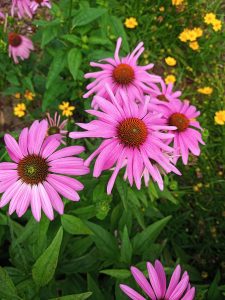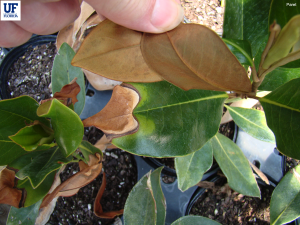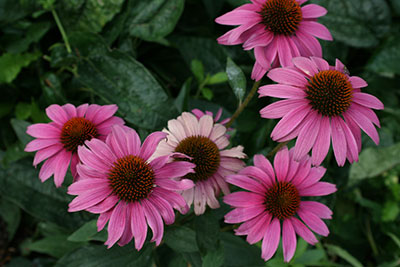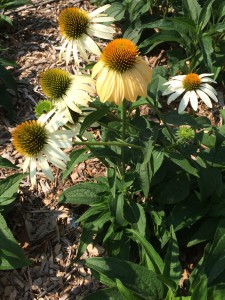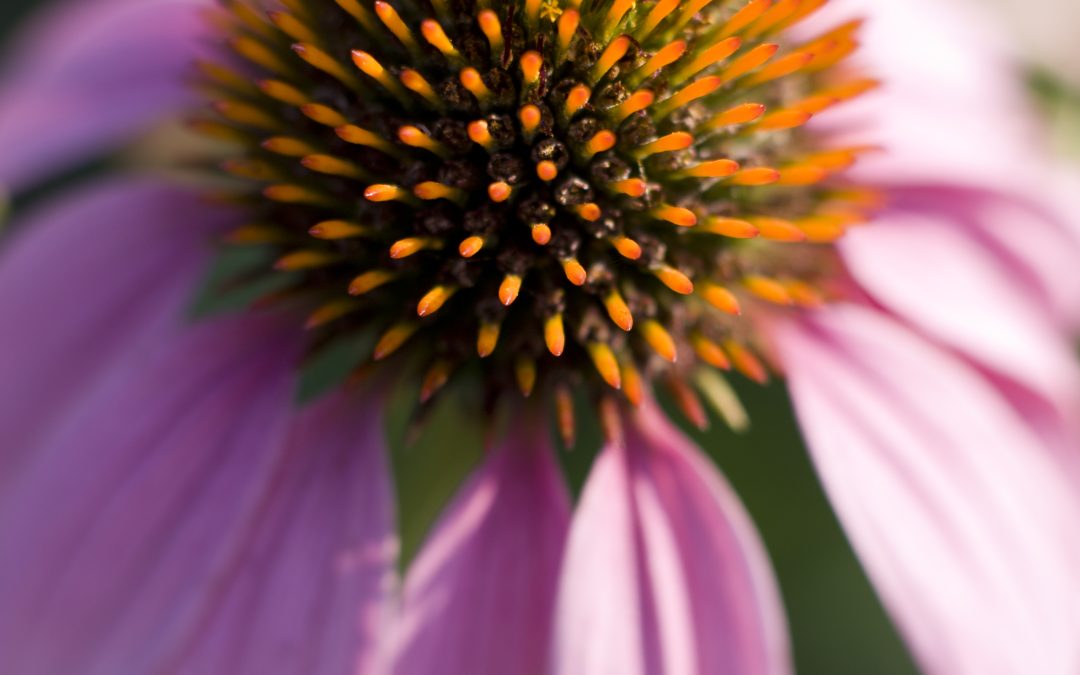
Anthracnose and Aster Yellowing Diseases Recently Diagnosed
My last Gardening in the Panhandle article was about the many diagnostic services provided by UF/IFAS Extension. In this article, I get to share the results of those services concerning samples recently submitted to the North Florida Education and Research Center (NFREC) Plant Disease Diagnostic Clinic (PDC).
Anthracnose in Dogwood (Cornus florida)
Before you get too concerned, this is not the dogwood anthracnose (Discula destructiva) that many of us have heard about from friends and colleagues up north, but one of the more common anthracnose species (Colletotrichum gleosporoides) that infects a variety of fruits, vegetables, and ornamentals.
This sample came from a homeowner who brought us a branch from a sick looking dogwood. As many of you know, due to a host of issues, from a short lifespan to living in the southern end of its range in a warming climate, dogwoods have been faring pretty bad lately, with most landscape plantings showing signs of decline or death. While Florida extension agents are informed that it is not the terrible anthracnose from up north, some couldn’t help but think the worst. I was delighted to get a good sample for identifying the disease – one that showed both healthy tissue and diseased tissue – and finally confirm what is causing the common decline symptoms seen in Leon County dogwoods. We bagged up the sample and delivered the next day to the NFREC PDC.
Within a week, the results came back and confirmed the run-of-the-mill anthracnose. This Anthracnose, caused by the fungus Colletotrichum gleosporoides, causes lesions (spots) and/or blights (larger areas of the leaf browning) beginning at the leaf margins that tend to expand and end up causing premature leaf drop. Unfortunately, once we see the damage, typically in the summer, it is too late for any remedy, as the infection begins in the spring. In addition to good practices to encourage good airflow – proper spacing, pruning – and minimize moisture on leaves – irrigate the soil, not the leaves, water in the morning – you will also need to be able to handle some amount of damage. Removing fallen leaves and branches is also helpful to reduce the chance of it cycling back the following spring. Chemical control options include 2-3 applications of preventative fungicide sprays containing chlorothalonil, myclobutanil, mancozeb, or thiophanate methyl early in the spring according to label directions.
Aster Yellows in Purple Coneflower (Echinacea purpurea)
I’ve had a few questions about Aster Yellows (Candidatus phytoplasma asteris) over the years but have never positively identified the disease in plant material. So, I was somewhat excited to see some of the purple coneflowers in our demonstration garden showing peculiar symptoms. Actually, I was alerted to the strange looking plants by a Master Gardener Volunteer who had been weeding the area. We delivered a sample to the NFREC PDC and in just over a week had results.
Aster Yellows is a disease caused by a phytoplasma and the sample can only be diagnosed with molecular techniques and genetic sequencing. Phytoplasmas, by the way, are a type of bacteria that lack a cell wall and are transmitted plant to plant via insect vectors, typically leafhoppers. Once inside the plant, these phytoplasma can move with plant sap and begin to disrupt the vascular system, causing malformed and discolored flowers, plant deformations, and stunted growth. While members of the Aster family – daisy, sunflower, goldenrod – are common hosts of the disease, Aster Yellows has been found to infect over 300 species in at least 38 plant families. Other species of phytoplasma, also causes lethal yellowing and lethal bronzing of palms and several witch’s-broom diseases.
Since there are not any chemical treatments for Aster Yellows, prevention is key. Once observed, it’s best to remove the infected plants as soon as possible to prevent spreading to other nearby species. In agricultural settings, the leafhopper spreading the bacteria becomes the main target to control using various insecticides. However, in ornamental settings, simply removing the infected plants is the recommended practice.
Stay Observant
Many common diseases are present in every landscape. By ensuring soil and plant health, many of these diseases can be tolerated with little damage. It is important for gardeners and landscapers to be on the lookout for problems so they can be dealt with before they get out of hand. UF/IFAS Extension provides assistance through our county offices and diagnostic clinics to help confirm identification of the pest and provide science-backed control options. If you think you have an issue in your landscape, please reach out to your local county extension office.
Article co-authored by Fanny Iriarte, Diagnostician with NFREC PDC.

